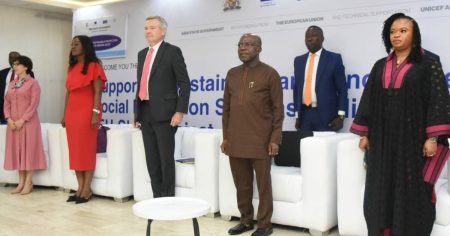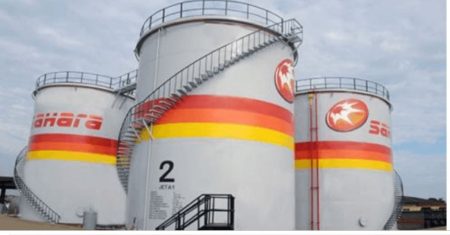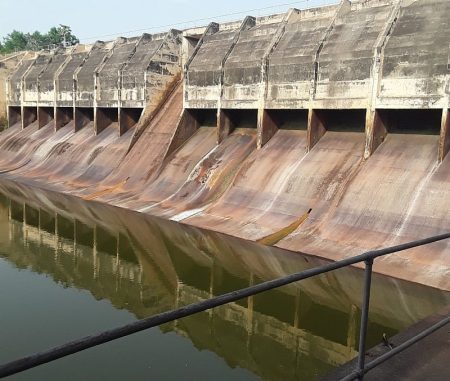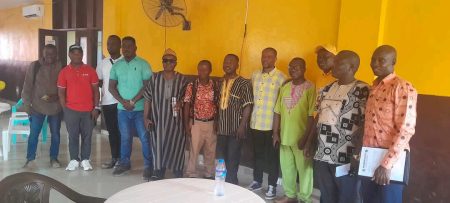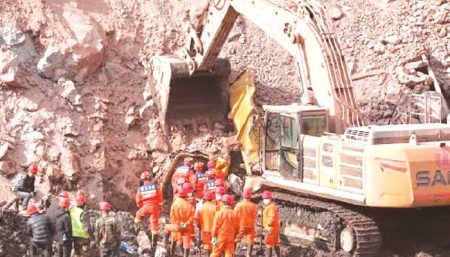The Lagos-Badagry Expressway, a critical transportation artery in Nigeria, has been clarified as a component of the broader Abidjan-Lagos Corridor Highway, a multinational project spearheaded by the Economic Community of West African States (ECOWAS). The Nigerian section of this trans-national highway stretches 79 kilometers, originating at Eric Moore in Lagos and culminating at the Seme Border, the gateway between Nigeria and Benin. This clarification dispels any ambiguity regarding the relationship between the existing Lagos-Badagry Expressway project and the ambitious Abidjan-Lagos Corridor Highway initiative. While the Lagos-Badagry Expressway is a solely Nigerian undertaking, it serves as a vital link within the larger regional highway network.
The broader Abidjan-Lagos Corridor Highway spans a significant 1,028 kilometers, connecting major West African cities and fostering economic integration within the region. Within Nigeria’s 79-kilometer stretch, responsibilities for development and maintenance are divided among various entities. The Federal Government has awarded a contract for the 46.2-kilometer segment from Agbara to the Seme Border, ensuring the completion of this crucial section linking Nigeria to Benin. The Federal Roads Maintenance Agency (FERMA) oversees the Okokomaiko to Agbara section, guaranteeing the upkeep of this vital link. Furthermore, the Lagos State Government manages the 10-kilometer stretch from Eric Moore to Igbo Elerin, reflecting a collaborative approach to infrastructure development.
The original vision for the Abidjan-Lagos Corridor Highway was a grand design featuring a uniform 10-lane roadway, incorporating provisions for both train and Bus Rapid Transit (BRT) systems. This ambitious plan aimed to facilitate seamless movement of people and goods, while also providing efficient public transportation options. However, the current implementation appears to have deviated from this initial concept, with each member country seemingly taking responsibility for its own section, potentially leading to variations in design and specifications. The current construction on the Nigerian section consists of three lanes without service lanes, a departure from the original 10-lane vision.
Despite the apparent shift from the initial 10-lane blueprint, the possibility of future expansion remains open. The existing three-lane infrastructure could be augmented with service lanes, light rail lines, and BRT corridors to enhance transportation capacity and cater to the needs of local communities along the route. These additions would provide convenient and affordable transportation options for residents, facilitating access to economic opportunities and social amenities. The inclusion of light rail and BRT corridors aligns with the original vision of integrated transportation systems within the highway corridor.
The right-of-way for the proposed highway spans an impressive 120 meters, indicating the scale and long-term vision of this project. This expansive right-of-way allows for future expansion and the potential integration of additional transportation infrastructure, such as the aforementioned light rail and BRT systems. Currently, the project is in the design phase, with completion anticipated in May. This crucial phase lays the groundwork for the subsequent construction phase, ensuring a well-planned and efficiently executed project.
Stakeholder engagement is a vital component of the Abidjan-Lagos Corridor Highway project. In March, the Federal Ministry of Works conducted a stakeholder engagement session at the Seme Border, involving the armed forces, police, paramilitary organizations, and representatives from border communities. This engagement aimed to foster collaboration and address any concerns from affected communities. A similar engagement took place in Agbara, involving royal fathers, youth representatives, community leaders, and ECOWAS Commission officials. These stakeholder engagement initiatives underscore the commitment to transparency and community participation in the project’s development. The inclusion of diverse stakeholders ensures that the project addresses the needs and concerns of all affected parties, fostering a sense of ownership and support for the initiative.







